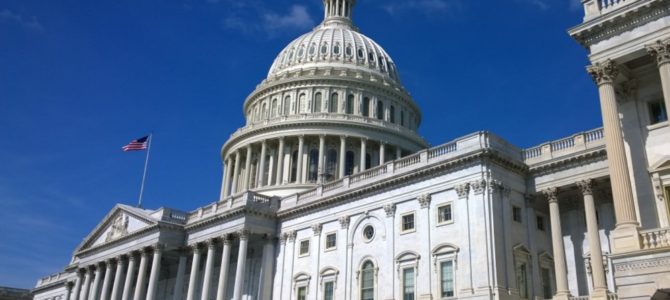
This week the Atlantic ran an article by Eric Orts, arguing for a major change in how seats to the U.S. Senate are apportioned. Like many others, he believes that small states have too much power in our legislative upper body. This idea floats around a lot, especially when Republicans control the Senate. Instead, he would give every state one senator to start with, then apportion the rest based on population. California, for example, would have 12, while Rhode Island would have 1.
Let’s set aside the broad arguments about this issue, such as the fact that limiting the power of the larger, more powerful states was a feature, not a bug of the U.S. Constitution, and that in all likelihood the plan Orts lays out violates that document. Charles Cooke has a good takedown in National Review Online that is worth reading.
I’d like to investigate just one of the claims Orts makes. In the essay, he contends that the Senate’s two per state apportionment is a “vehicle entrenching white supremacy.” His argument is that because most small states are predominantly white, white voters are being overrepresented. He views this not only as an example of white supremacy, but one that works to ensure the permanence of white supremacy. But is that true?
There is no doubt that white voters in Wyoming and Iowa are proportionally more represented in the Senate. But at the same time, white voters in Texas and New York state are no more represented in the Senate than their black or Latino neighbors in those states, and are less represented than people of color in smaller states such as Alabama or Mississippi.
In a tweet defending his article, Orts claims that only one ethnic group is “privileged” by this imbalance: whites. But, importantly, Orts isn’t just saying that the white people in small states are privileged by the imbalance, he is arguing that all white people are. This is where it all starts to fall apart.
We are being asked to believe that the overrepresentation of small state white voters accrues somehow to the benefit of large and mid size state white voters, as well. In order for this to be correct, there has to be some set of special interests common to all white people regardless of geography, which leads to policies that favor all white people. If such a set of special interests exists, Orts does nothing to describe it.
To put it more simply, Orts is arguing that the outsized influence of white voters in Utah provides advantages to white voters in Brooklyn. But what are the advantages? What bills are being passed that uniquely uplift the condition of all white people? Or uniquely harm the condition of others? Are Bernie Sanders and Patrick Leahy really entrenching white supremacy by representing mostly white Vermont? What in their voting record suggests this?
Unfortunately, the assumption underlying Orts’ argument is an ugly one. His claim only works if it is true that, either consciously or unconsciously, white voters favor politicians and programs that are better for white people and that this preference for white supremacy is an essential element in how they vote. If this were true, however, wouldn’t we see white voters overwhelmingly flock to the political party that best supported these supposedly white supremacist policies?
In fact, we see exactly the opposite. According to Pew, 33 percent of whites are Republicans, 26 percent are Democrats, and 37 percent are Independents. If white people really are voting based on the interests of their racial group, they certainly can’t seem to agree what positions and policies best advance them. Apparently white voters in tiny Delaware, who elected Democrats Chris Coons and Tom Carper, have very different ideas about what is best for white people than do those in Wyoming, who elected Republicans John Barrasso and Mike Enzi.
Anyone for whom identity politics is not the alpha and omega of American governance clearly sees that race is just one of an enormous number of factors that influence people’s votes. In fact, for many Americans it doesn’t influence their vote at all. Economic class, education level, rural versus urban living, religious affiliation, military service, and dozens of others factors play into how we vote far more than the color of the voter’s skin.
The fact that small states were given equal power in the Senate, so as to maintain some degree of independence and local governance in the face of huge states, is not white supremacy. Furthermore, the disparity in racial demographics of the states is not some conspiracy to create greater white political power. Anyone is free to move to Montana.
There is no reason to believe that politicians elected by white voters behave in ways that harm minority populations. Every major piece of civil rights legislation that Orts cites in his piece was passed by Congresses that were elected by a majority white electorate.
Saying the Senate apportionment rules are a tool of white supremacy would be silly if it wasn’t so dangerous. Not only does it severely water down a term that should be reserved for people in hoods or carrying tiki torches, it also suggests that the immutable fact of our race controls or at least strongly influences how we participate in democracy.
There are rational arguments to be made for changing the Senate into a more representational body. I don’t agree with any of them, but they exist. This is not one of them. Demography is not destiny; people’s minds and souls don’t have skin color. White people writ large are not any party or agenda’s reliable voting block, and they have no set of special interests at odds with those of other Americans.
Sadly, Orts’ claim appears to be nothing more than a flimsy attempt to point at something he disagrees with and yell racist. That is not helpful in this specific debate, and it’s not helpful for our discourse in general.








